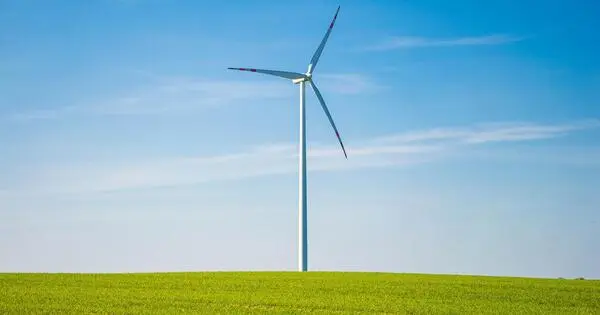According to a new study, better wind forecasting can save American consumers millions of dollars every year on their electricity costs. Wind energy costs have already decreased thanks to more efficient turbines, but there is still a significant barrier to overcome when it comes to renewable energy: intermittency. Wind and solar farms, unlike coal and gas power facilities, can only produce as much electricity as the weather permits.
Scientists discovered that by improving weather forecast accuracy over the last decade, consumers saved at least $384 million in energy. The projections were based on NOAA’s High-Resolution Rapid Refresh model, which gives daily weather forecasts for every portion of the United States. These include wind speed and direction data, which utilities can use to gauge how much energy their turbines will produce.
Wind energy is consuming a larger share of the energy landscape, implying a greater reliance on wind’s intermittent nature. Utilities must be able to precisely and far in advance estimate wind patterns in order to decide how much additional energy they must produce from other sources. A poor forecast might cost the utility a lot of money, which is subsequently passed on to customers. A solid prediction, on the other hand, can result in significant savings for those same clients.
The researchers at NOAA have been struggling for a long time to put a value on their forecast. They know their models are getting better, they know that people use those in important economic decisions, but they have a hard time quantifying exactly what the value of that is.
Martin Shields
In Journal of Renewable and Sustainable Energy, by AIP Publishing, scientists from Colorado State University and the National Oceanic and Atmospheric Administration determined that by increasing the accuracy of weather forecasts over the last decade, consumers netted at least $384 million in energy savings during that time.
The researchers based their estimates on NOAA’s High-Resolution Rapid Refresh (HRRR) model, which gives daily weather forecasts for the entire United States. Wind speed and direction data are included in these forecasts, which utilities can use to estimate how much energy their turbines will produce.
NOAA releases an upgraded version of the HRRR model every few years and spends a year testing it while leaving the old model in place. During that testing year, NOAA researchers compare each model’s forecasts to actual conditions to see how much each model has advanced over its predecessor.

“We were able to compare these models, side by side, and see when one model makes a better prediction than the other,” said author Martin Shields. “And what we see over time is that the models get better at predicting wind, and that generates additional savings for utility consumers.”
The newest models performed better, as predicted, but the researchers sought to quantify how much better. Every discrepancy between a forecast and actual wind speed has a cost connected with it, either in the form of unnecessary operational expenditures or the price of extra electricity from the wholesale market.
The researchers were able to assign a monetary value to each updated model by comparing the differences in mistakes between models. During the overlap model period in 2015 and again in 2017, the team projected that if utilities had used the newer model instead of the older one, they would have saved millions, the majority of which would have been passed on to consumers.
“The researchers at NOAA have been struggling for a long time to put a value on their forecast,” said Shields. “They know their models are getting better, they know that people use those in important economic decisions, but they have a hard time quantifying exactly what the value of that is.”
The researchers intend to focus on HRRR’s cost savings as a result of cloud cover projections for solar power. The savings are tiny for each individual home in the United States (with an estimated population of 329 million). However, these advantages may increase as forecasts improve and more affordable wind power enters the market in the United States.
Researchers are continually attempting to improve renewable energy estimates. Newer HRRR versions should be able to better predict wind ramps, which occur when wind speeds rapidly shift. Another study is underway, according to the researchers, to examine how more precise cloud cover forecasts could improve solar energy and lower energy prices.
















